In Part 1 of our look into World Cup results, we found that in the Group Stage of the tournament:
Let’s dive in to examine more results by Confederation (location) with PTC Mathcad!

I’ll start with some error checking. When I was compiling results in spreadsheets, I noticed that some countries that qualified in the past might not exist anymore, or that I might have called them something else that what my source spreadsheet calls them.
I write a program that compares my matrix of the seeds with the matrix of Confederations using a lookup and nested try – on error functions:
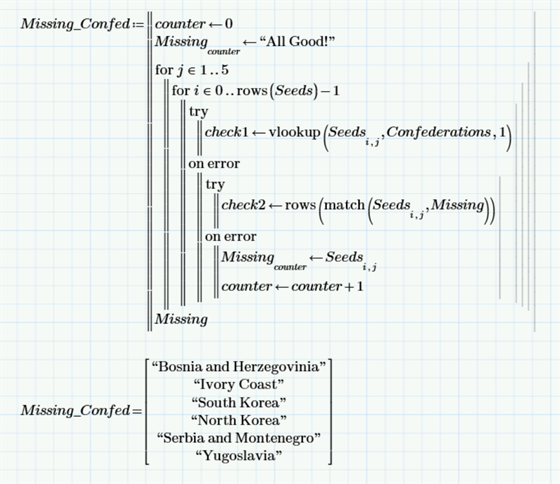
After correcting a handful of discrepancies, I’m assured that I have accounted for all countries.
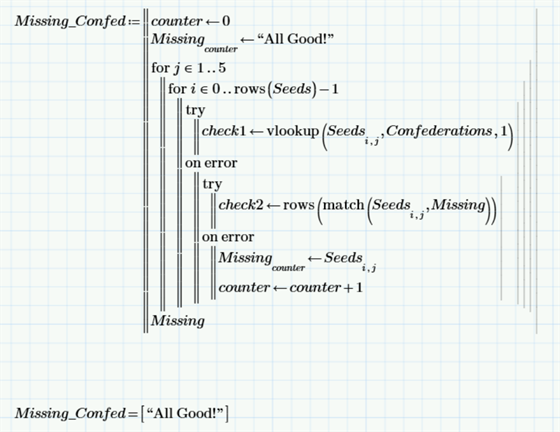
Now let’s add the Confederation data to the Upsets matrix using a lookup function. Here’s the program:
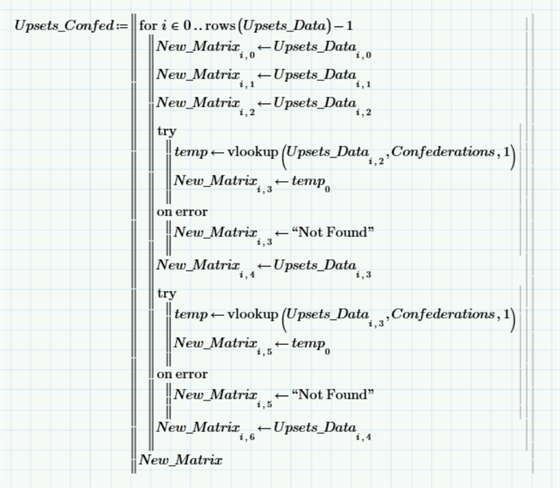
And here are the results:

I’ll do the same with my Seeds matrix. Here’s the program:
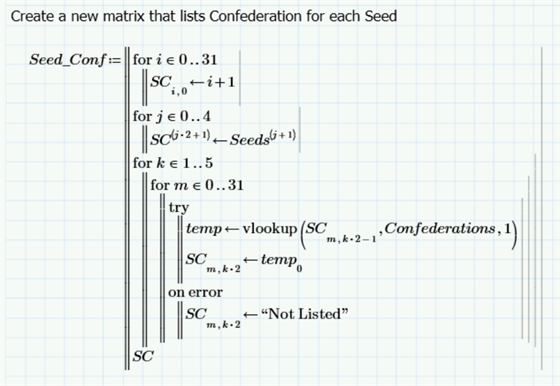
And the results:
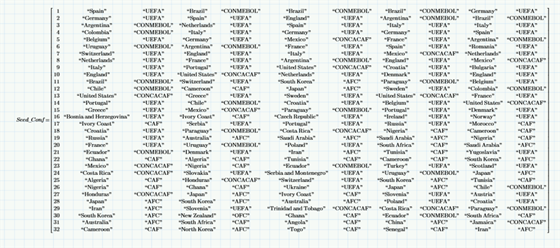
The first thing I want to look at is the breakdown of World Cup appearances by Confederation.
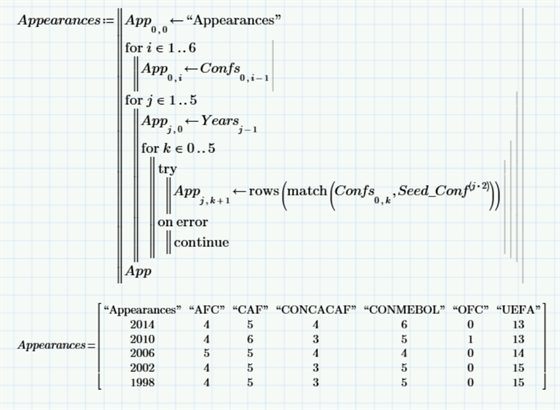
Here’s what I surmise:
I wonder how that compares to the number of countries in each Confederation. I have a matrix that lists that:

I write a program that copies the Appearances matrix and divides the number of appearances by the number of countries in that Confederation:
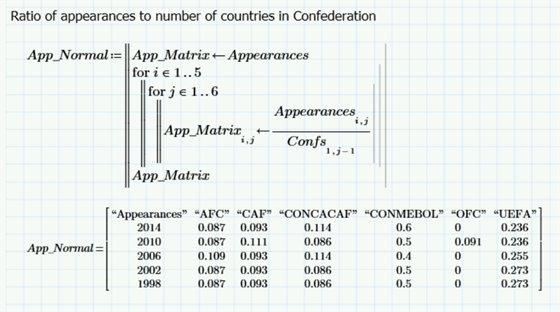
About a quarter of the teams in the European Confederation make it to World Cup. For Asia, Africa, and North America / Central America / Caribbean, it’s usually just under 10%. But wow, on average, half the teams in South America make it to World Cup.
Now let’s get to analyzing upsets by Confederation.

Now we’re starting to see some interesting information.
How do these upsets fare when you look at Confederation versus Confederation? Now I’m really starting to get into some tricky programming.
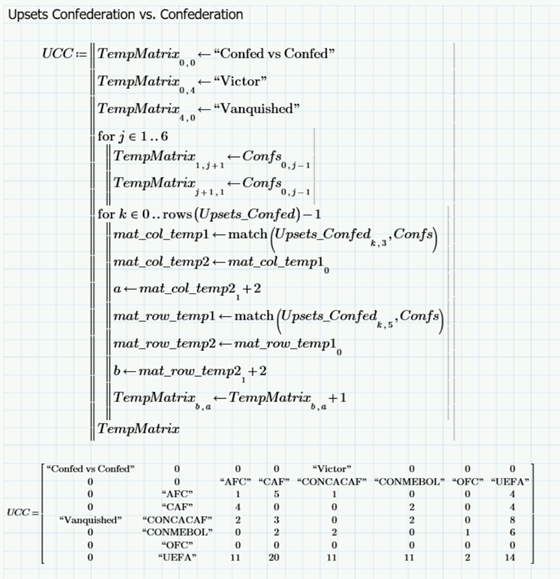
What will help me predict outcome of a given match is knowing the differential. A simple program will copy the matrix and calculate the differential between upsetting and being upset. Negative values within a column are bad for that confederation, and the more negative the number, the worse off it is for them.
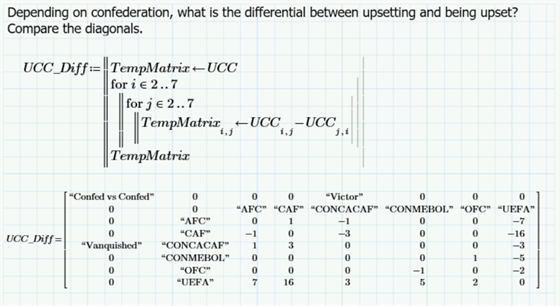
What does this tell me? I’m favoring African, Asian, and South American teams to upset European teams.
That’s all for now. For those of you who like International Football as much as I like American Football, you should have lots here to digest.
What I find interesting is that I know relatively little about FIFA and World Cup, but with PTC Mathcad, I can still mine data and uncover interesting results.
Do you have data you want to crunch? Numbers you’re trying to make meaning from? Download PTC Mathcad Express , your free-for-life copy of PTC’s engineering math software.